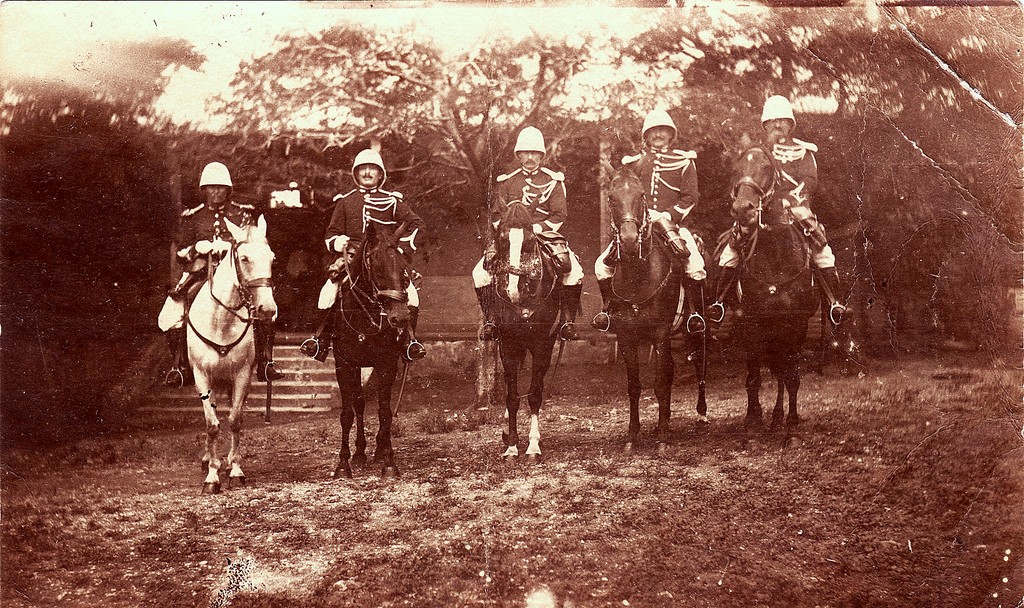GENDARMES A CHEVAL 1920
Détachement de gendarmerie servant aux Colonies (Nouvelle-Calédonie) vers 1920.
Télécharger ici ce texte dans son intégralité (2.64 MO) au format PDF
Le gendarme et le cheval forment un couple indissociable auprès des Français de l’origine de la maréchaussée au début du XXe siècle. Ils font l’objet d’une riche réglementation où la remonte tient une place centrale car le gendarme est propriétaire de sa monture jusqu’en 1919. Le monopole des brigades à cheval s’achève dès 1780 avec l’apparition des brigades à pied dont l’essor ne cesse de croître. La motorisation porte le coup fatal en supprimant en 1937 le cheval dans la gendarmerie départementale. En gendarmerie mobile, il reste un auxiliaire traditionnel pour le maintien de l’ordre jusqu’en 1947, malgré les interrogations causées par les émeutes du 6 février 1934. Il poursuit aussi sa carrière en outre-mer jusqu’en 1960. Après cette date, la garde républicaine de Paris devient dépositaire des traditions équestres militaires. Unité de prestige en quête de reconnaissance sur le plan opérationnel, elle a développé, ces vingt dernières années, les missions de sécurité et d’intervention à cheval.
Le cheval dans la gendarmerie de XVIIIe au XXIe siècle par Édouard Ebel et Benoît Haberbusch
Revue Historique des armées
Télécharger ici ce texte dans son intégralité (2.64 MO) au format PDF
---------------------------------------------
The Horse in the Gendarmerie from the 18th Century to the 21st. A gendarme and a horse was an indissoluble pairing in France from the origins of the corps of mounted constabulary, the Maréchaussée, until the beginning of the 20th Century. They were the subject of detailed regulations in which the remount enjoyed a central place because the gendarmerie owned their own mounts until 1919. The monopoly of the mounted brigades ended as from 1780, with the appearance of the gendarmerie’s foot brigades whose size grew steadily from that date on. It was motorisation that dealt the fatal blow to the mounted gendarmes, leading in 1937 to the withdrawal of horses from the departmental gendarmerie. In the Gendarmerie Mobile, the horse retained its place as an auxiliary in the maintenance of public order until as late as 1947, in spite of the inquiries that resulted from the Paris riots of 6 February 1934. A career for the Gendarmerie’s horses remained, overseas, until 1960. After that date the Parisian Republican Guard became the depositary of the military’s equestrian traditions. A prestige unit in search of recognition at an operational level, the Garde Républicaine has, over the last twenty years, carved out a number of mounted security and intervention missions for itself.
